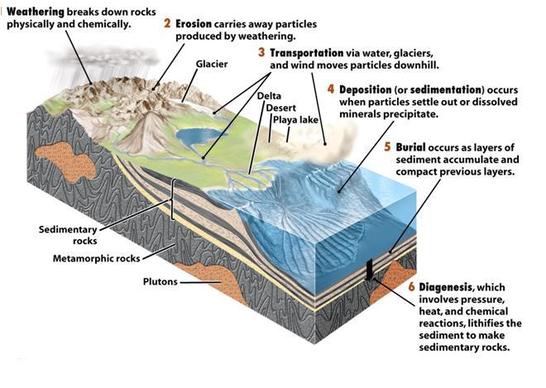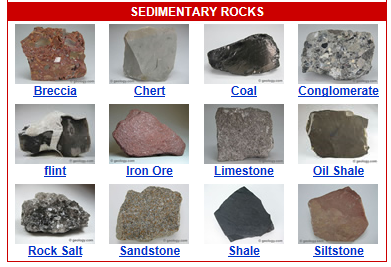Sedimentary rocks are formed by the accumulation of sediments. The forces of wind, rain, snow, and ice combine to break down or dissolve (chemical weathering), and carry away (transport) rocks exposed at the surface. These particles eventually come to rest (deposited) and become hard rock (lithified).
Sedimentary rocks tell us what the Earth's surface was like in the geologic past. They can contain fossils that tell us about the animals and plants or show the climate in an area.
Below are some examples of sedimentary rocks.
Below are some examples of sedimentary rocks.
Location |
|

